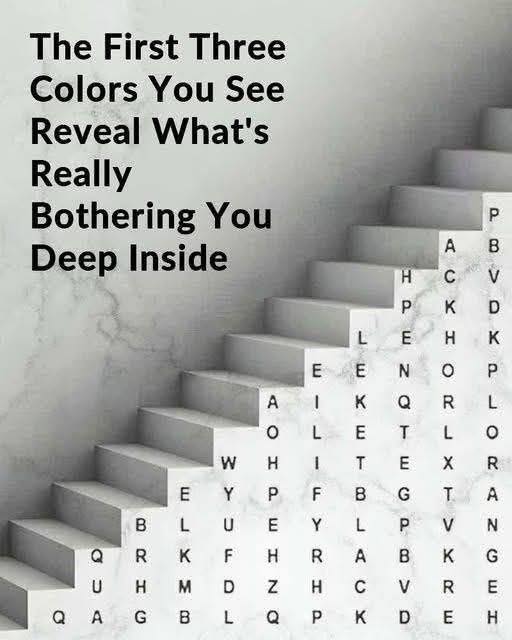ADVERTISEMENT
#### **1.2 Colors and Subconscious Associations**
Psychologists argue that our subconscious minds are powerfully influenced by the colors we encounter. For example, if you constantly find yourself gravitating toward shades of blue, it might indicate that you are seeking peace or trying to calm a chaotic mind. Conversely, if you notice an overwhelming presence of red in your environment, it could signal underlying feelings of anger or frustration.
The power of color is so significant that even businesses and marketers use color strategically to influence consumer behavior. For example, fast food restaurants often use red and yellow in their branding to stimulate appetite and excitement, while banks prefer blue tones to convey trustworthiness and stability.
With all this in mind, it’s no surprise that the first three colors you notice can offer insight into your psychological state and the emotional challenges you’re facing.
### **2. Understanding the Colors: How Each One Reflects Your Emotional State**
Let’s now explore the deeper meaning behind each color, paying particular attention to how the colors you see may correspond to unresolved issues or subconscious worries.
#### **2.1 Red: Anger, Passion, and Stress**
If the first color you notice is red, it could indicate that there are unresolved feelings of anger, frustration, or stress in your life. Red is often associated with intense emotions—both positive and negative. If you’re feeling overwhelmed by these emotions, it might be your subconscious telling you that you need to address these feelings before they begin to negatively affect your well-being.
– **Emotional Implication**: Red can symbolize a need for passion or a desire for change. However, it can also signal that you’re carrying anger or frustration that you’ve been suppressing. You may have unresolved conflicts or need to release pent-up emotions.
– **Possible Issue**: Feeling overwhelmed, stressed, or stuck in a situation that requires assertiveness but where you have difficulty expressing your feelings.
#### **2.2 Blue: Calm, Sadness, and Introspection**
If blue is the first color you notice, it may indicate that you are in need of calmness, peace, or introspection. Blue is commonly linked with tranquility and serenity, but it can also represent sadness or emotional distance. Your subconscious might be signaling that you need to take some time for yourself to reflect on your emotions or process recent events.
– **Emotional Implication**: Blue can suggest a desire to withdraw or retreat into your own thoughts, possibly to cope with sadness or emotional exhaustion. On the other hand, if blue feels comforting, it could signal that you crave peace or calm in your life.
– **Possible Issue**: You may be feeling emotionally drained, lonely, or uncertain about where you are in your life or your relationships.
#### **2.3 Yellow: Anxiety, Optimism, and Caution**
Yellow, often associated with happiness and energy, can also indicate a state of anxiety or caution. If you notice yellow first, it may be a sign that you’re feeling nervous about an upcoming event or situation. It can also indicate that you’re experiencing a push-pull dynamic between optimism and fear.
– **Emotional Implication**: Yellow can symbolize a fear of the unknown or the need to remain cautious. However, if the yellow feels uplifting, it may point to a desire for positivity and growth, signaling optimism for the future.
– **Possible Issue**: You might be struggling with self-doubt, anxiety about future events, or uncertainty about a decision you need to make.
#### **2.4 Green: Balance, Envy, and Personal Growth**
If green stands out to you, it could represent a desire for balance or harmony. Green is associated with nature, growth, and healing. It may signal that you’re seeking personal growth or that you’re experiencing a period of emotional healing. However, green can also indicate feelings of jealousy or envy, especially if you feel as though you’re not where you want to be in life.
For Complete Cooking STEPS Please Head On Over To Next Page Or Open button (>) and don’t forget to SHARE with your Facebook friends
